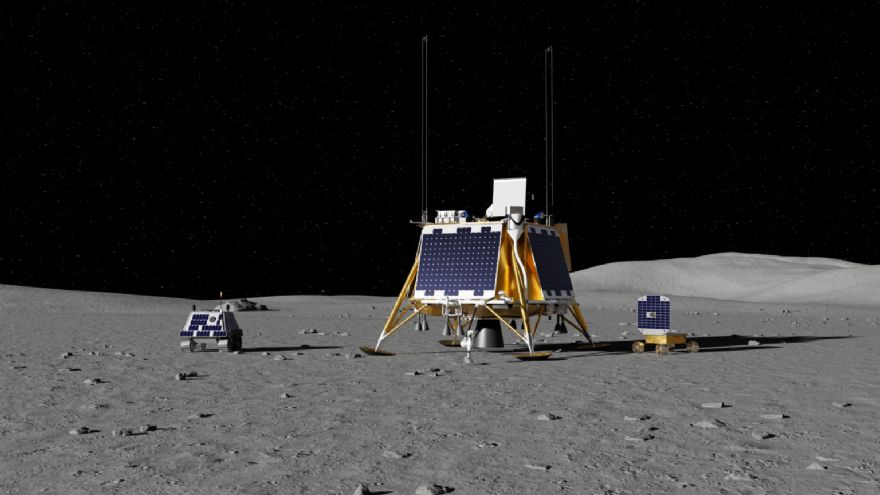 Firefly Aerospace
Firefly Aerospace, a market leading space and defence technology company, has been awarded a $176.7 million
NASA Commercial Lunar Payload Services (CLPS) contract to deliver five NASA-sponsored payloads to the Moon’s south pole in 2029. The mission will utilise Firefly’s Elytra orbital vehicle and Blue Ghost lunar lander to enable payload operations that include evaluating the Moon’s south pole resources, such as hydrogen, water, and other minerals, and studying the radiation and thermal environment that could affect future astronauts and lunar infrastructure.
Jason Kim, Firefly Aerospace’s CEO, said: “We are honoured to support another NASA CLPS task order as a proven, reliable partner for robotic missions to the Moon. Following our first Blue Ghost mission that made history just a few months ago, this bold Firefly team proved we have the right mix of grit, innovation, and dedication to not only ‘stick’ the landing, but also complete all scientific objectives for our payload partners. We have set the bar high, and we aim to continue setting new records in our missions to come with our active production line of Blue Ghost landers.”
During Blue Ghost Mission 4 operations, Firefly’s Elytra Dark transfer vehicle will first deploy the Blue Ghost lander into lunar orbit and remain on orbit to provide a long-haul communications relay for the mission. Blue Ghost will then land in the Moon’s south pole region, deploy the rovers, and enable payloads operations with data, power, and communications services for more than 12 days on the lunar surface.
The NASA-sponsored payloads onboard Blue Ghost include two rovers – the MoonRanger rover and a Canadian Space Agency rover – as well as a Laser Ablation Ionization Mass Spectrometer (LIMS), a Laser Retroreflector Array (LRA), and the Stereo Cameras for Lunar Plume Surface Studies (SCALPSS), which also flew on Blue Ghost Mission 1. These payloads will help uncover the composition and resources available at the Moon’s south pole, advance lunar navigation, evaluate the chemical composition of lunar regolith, and further study the effects of a lander’s plume on the Moon’s surface during landings.
Following Blue Ghost Mission 4 operations, Elytra Dark will remain operational in lunar orbit for more than five years in support of Firefly’s Ocula lunar imaging service. The mission enables a third Elytra Dark in Firefly’s growing constellation to provide customers with faster revisit times for lunar mapping, mission planning, situational awareness, and mineral detection services. The first two Elytra Dark vehicles will launch as part of Blue Ghost Mission 2 to the far side of the Moon in 2026 and Blue Ghost Mission 3 to the Gruithuisen Domes in 2028.
Chris Clark, vice president of spacecraft, said: “Firefly’s Elytra Dark spacecraft are great companions for Blue Ghost – they are highly maneuverable vehicles built with the same flight-proven components and propulsion system that successfully landed Blue Ghost on the Moon. As our Elytra constellation continues to grow in lunar orbit, Firefly is in a unique position to provide lunar imaging services and a communications relay for missions anywhere on the Moon’s surface. With extra payload capacity on both Elytra and Blue Ghost, we invite additional government and commercial customers to join our fourth mission that is built upon the same reliable architecture and led by the same trusted team.”